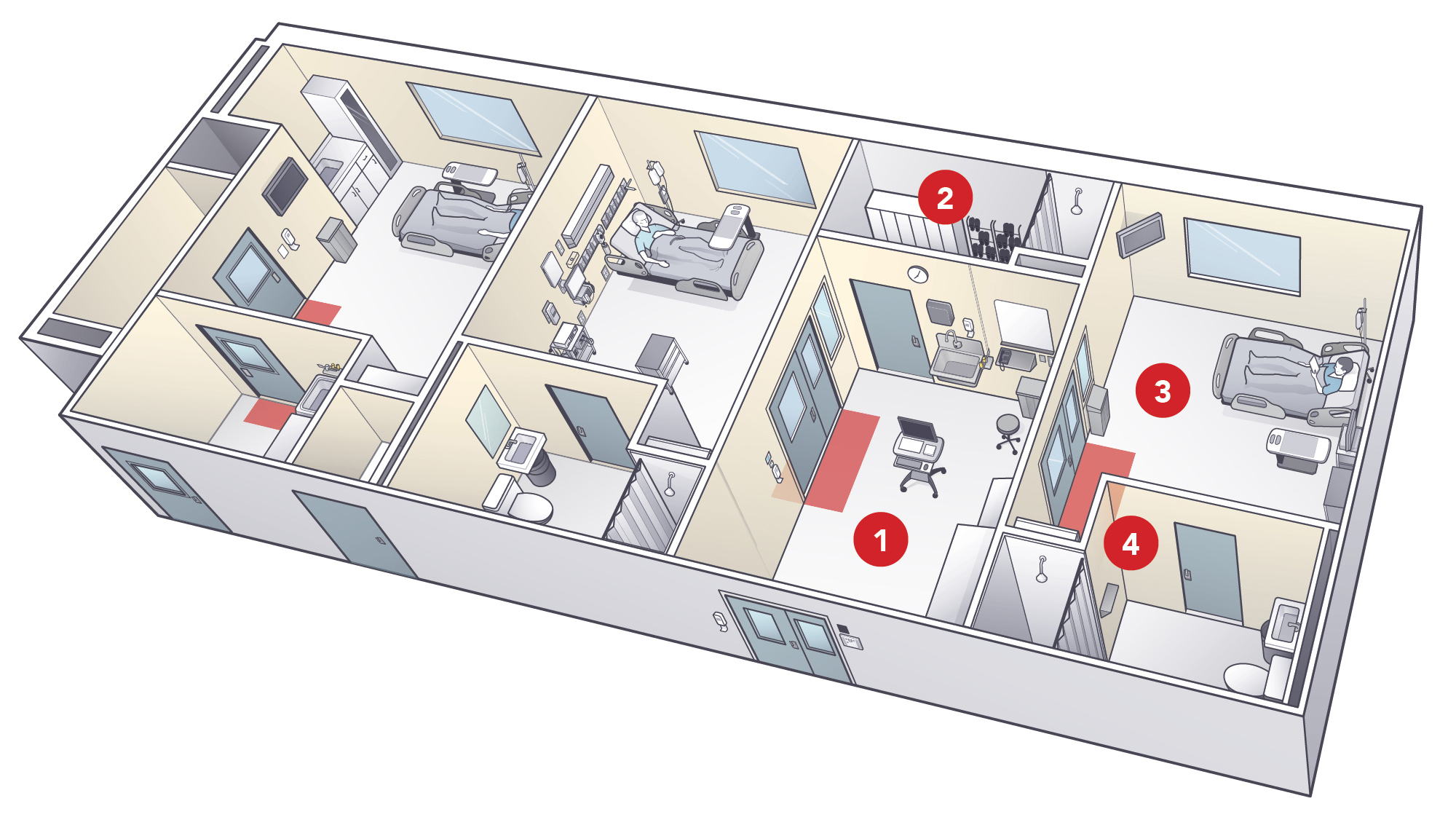Inside Emory's Special Isolation Unit

- Staff use this room to don protective gear along with a partner. The full-body suits and masks shield them from blood and bodily fluids.
- Medical staff who are providing direct patient care use the locker room to change into disposable scrubs.
- There are three private patient rooms; all resemble ICU rooms, with adjustable beds, IVs, and monitors. Every procedure a patient could need, from mechanical ventilation to hemodialysis, can be performed in the unit.
- All liquid waste is disinfected and flushed, and disposable waste is autoclaved and incinerated. At the peak of the Ebola patients' illnesses, up to 40 bags a day of medical waste were produced.
Emory's special isolation unit was built in cooperation with the Centers for Disease Control and Prevention to treat patients with lethal, contagious diseases acquired in the field or in a lab. It is one of four such high-level bio-containment units in the U.S. The other three are at the National Institutes for Health in Maryland, Rocky Mountain Laboratories in Montana, and the University of Nebraska Medical Center. The units are set up to contain infectious diseases such as severe acute respiratory syndrome (SARS), smallpox, tularemia, plague, viral hemorrhagic fevers, and drug-resistant illnesses.
Emory's 11-bed unit includes three ICU rooms, two of which are connected to the large anteroom in the middle, a staff dressing room with lockers and shower, and a biosafety cabinet for specimen processing. A lab dedicated to the unit was established just outside the unit. The lab has the capacity to perform blood counts, routine chemistries, blood gas measurements, urine analysis, and tests for a variety of infectious agents.
The air pressure in all the patient care rooms is negative, so the air flows from the hallway to the anteroom to the patient room (this means the doors don't need to be sealed, since airflow goes into the patient rooms, not out.) The rooms have 20 air changes per hour, so that all infectious particles are rapidly removed, and air from the unit is HEPA-filtered before being sent out through the exhaust system.
There is a vestibule where select staff members, highly trained in infection control, suit up before entering the room. Depending on the type of pathogen, non-suited health care workers and family members can use a plate glass window and communication system to safely observe and visit with the patients.
All disposable waste is autoclaved (sanitized with pressurized steam) and then incinerated, from coverall suits to food trays. Liquid wastes are disinfected with hospital grade cleaning agents for several minutes and then flushed down the toilet.
Equipment that is not disposable, like the powered air purifying respirator (PAPR), is disinfected.